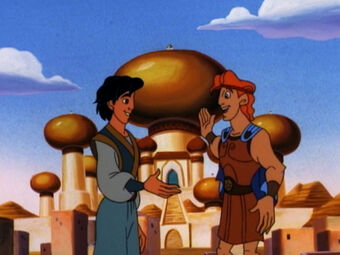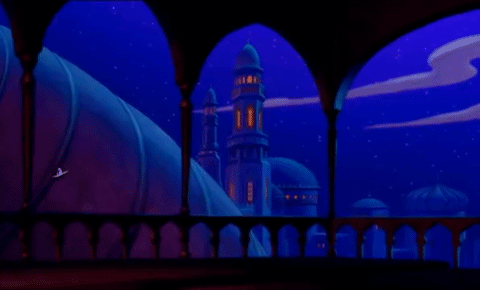_caleb
Well-Known Member
Someone's obviously never picnicked in the Bois de Vincennes...Do talking rats really live in Paris.
Someone's obviously never picnicked in the Bois de Vincennes...Do talking rats really live in Paris.
Many of us believe that what makes Disney's theme parks stand out above the rest is their attention to detail. By detail, I don't mean just ornamentation or literal reproduction, but a level of authenticity that comes from deep understanding of the subject matter and careful attention to translating the essence of the inspiration into the theme.I find it bizarre so many people get hung up on the placement of fictitious characters. These are for the most part fairy tales or simple modern cartoons. A talking snowman from a made up land in Norway? NO WAY! A talking rat in France, well that just makes sense since the cartoon was based in Paris. Completely logical!
To me the question is does the addition of a character add or detract from the pavilion? Maelstrom was a significant loss not because a cartoon replaced it but because the Frozen ride itself is poor. But the people love it. The rat ride in Paris is huge win. Lost nothing and added a major attraction. Do talking rats really live in Paris. Nope.
Aladdin placed in a often overlooked Morocco pavilion? Excellent idea. I appreciate the attention to detail in the pavilion but once I walk through it for 15 minutes every other year I am good. Time to move to the next one. Does a cartoon representation of a fable fit geographically? I don't care and neither does the typical "ignorant" American when they visiting a theme park (it is not a museum).
Just wait until they build the Walmart pavilion.Looks all earthling to me.
Why?! What on earth do people have against the Morocco pavilion? It’s absolutely gorgeous.I'll probably be slammed....
All personal opinion - bulldoze it, and put in the Russia Pavilion, that people have been talking about for a good decade.
Only if Putin pays 15 years upfrontI'll probably be slammed....
All personal opinion - bulldoze it, and put in the Russia Pavilion, that people have been talking about for a good decade.
I'll probably be slammed....
All personal opinion - bulldoze it, and put in the Russia Pavilion, that people have been talking about for a good decade.
Nah, they should demolish that British Colony Pavilion, you know the Ammerecan Journey or whatever it's called.I'll probably be slammed....
All personal opinion - bulldoze it, and put in the Russia Pavilion, that people have been talking about for a good decade.
...for now.People concerned about shoving characters in the pavilion/altering the country should also remember that United Kingdom, Canada, American Adventure and Germany are also all fully operated by Disney and have remained (for better or worse) mostly unchanged.
Like iaswWhy would you want to bulldoze it to build something else when there are several empty expansion pads?
You need more history in your diet, 642–750AD specifically the Rashidun and Umayyad Caliphates which conquered from Mesopotamia to Spain.
To ignore history is to be doomed to repeat it.

This isn’t correct. Yes, the Sphinx is shown anachronistically in the process of being carved, but the film is full of references to Islamic culture, whether architectural (mosques, minarets), costume-related (fezzes and turbans), or terminological (the word “Allah” in particular). Agrabah cannot be situated in a particular time or place—it’s too much of a melange—but in overall feel, it belongs to the medieval Middle East.Disney’s Aladdin is very much pre-Islamic.
A lot of what we think of as “Islamic” culture actually predates Islam.This isn’t correct. Yes, the Sphinx is shown anachronistically in the process of being carved, but the film is full of references to Islamic culture, whether architectural (mosques, minarets), sartorial (fezzes and turbans), or terminological (the word “Allah” in particular).
Yes, the word “Allah” predates Islam, as does the turban (I won’t get into the fez, because that’s a very complicated rabbit hole). The point is that Aladdin brings these things together in a way that is clearly portraying an Islamic cultural context. When the man saying “Allah” and wearing a turban is a sultan served by a vizier named Jafar, you can be sure we’re supposed to imagine ourselves in the Islamic Middle East (though his palace, inexplicably, looks more like the Taj Mahal). The Genie, while transforming Aladdin into Prince Ali, criticises his street-urchin gear as being “much too third century”, which already tells us we’re several millennia later than the carving of the Sphinx. Aladdin and Jasmine end their magic-carpet ride in China watching fireworks over the Hall of Supreme Harmony, which wasn’t built until the fifteenth century. And, as I mentioned in my previous post, the architecture shown in the film includes mosques, complete with crescent pinnacles and minarets:A lot of what we think of as “Islamic” culture actually predates Islam.
For example, Arab Jews and Christians also used “Allāh” simply because that was the Arabic word for “the god”, but it was codified into the Islamic faith because that’s the word God used to describe himself to Muhammad.
The fez/tarboosh? Nobody knows where it came from, but the current thinking is that it originated in Greece or Macedonia before being adopted by the Turks and then spread into Africa by Islamic conquest.
Turbans? Our earliest known example was a Mesopotamian sculpture of a man wearing a turban from 2350 BC.


I have a degree in history... and Disney’s Aladdin is very much pre-Islamic.
Case in point: during A Whole New World, Aladdin and Jasmine witness a stonecutter working on the Great Sphinx in Egypt.
the Sphinx was built around 2500 BC., over 3000 years before your caliphates took control of Northern Africa.
plus here’s Aladdin teaming with Hercules in the
animated series.

Register on WDWMAGIC. This sidebar will go away, and you'll see fewer ads.
